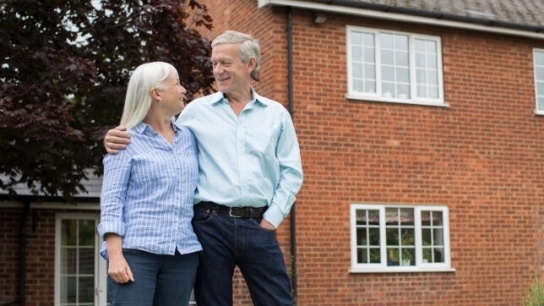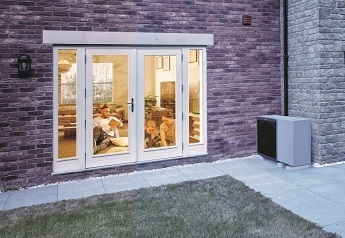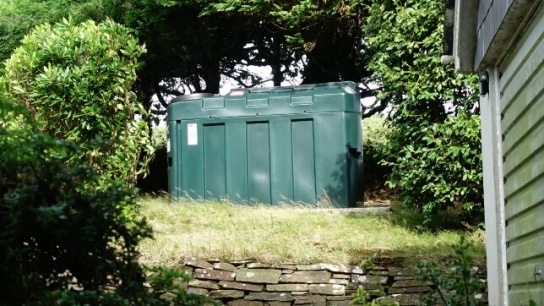UK Gas Boiler Ban – Everything You Need to Know
With the UK committed to reducing emissions to zero by 2050, the government needs to take drastic action. And it’s highly likely a key part of their plans will be a gas boiler ban, starting from as early as 2025.
So what will a gas boiler ban mean for you? Will there be an oil boiler ban too? And what alternatives are there to gas heating?
Why do we need a gas boiler ban?
Back in 1970 – the year Glastonbury Festival was born and the Nuclear Non-Proliferation Treaty came into effect – just a third of our homes had central heating. But by 1990 this had skyrocketed to 80%.
Over the last few decades we’ve become used to cheap and convenient heat. But according to the Committee on Climate Change, heating is responsible for almost a third of the UK’s greenhouse gas emissions.
Today, 95% of UK homes are centrally heated. And the vast majority rely on gas or oil-fired boilers.
As gas and oil are fossil fuels, they both release carbon dioxide (CO2) – a ‘greenhouse gas’ that contributes to climate change. In fact, most CO2 emissions come from burning fossil fuels. With heating contributing to about 30% of the UK’s total greenhouse emissions. And about half of this from heating our homes.
It’s not solely a UK problem, however. Gas is widely used across the world to provide heat for homes – see the table below. It’s a significant energy source in Oceania and parts of Asia, too. Across the developing world, on the other hand, much of the energy used in homes comes from biofuels and the burning of waste[1].
|
Country |
Fuel (% of total energy used for heating in buildings) |
|
UK |
Gas: 78% Electricity: 12% |
|
US |
Gas: 50% Electricity: 42% |
|
Sweden |
District heating: 50% Electricity: 38% Biofuels and waste: 5% |
|
Norway |
Electricity: 85% |
|
New Zealand |
Gas: 23% Electricity: 63% |
|
France |
Gas: 42% Oil: 21% Electricity: 15% Biofuels and waste: 12% |
|
Netherlands |
Gas: 83% Electricity: 7% |
|
Germany |
Gas: 43% Oil: 26% Electricity: 10% |
|
Canada |
Gas: 52% Electricity: 25% |

How can a gas boiler ban help?
In the UK and other parts of the developed world, the most effective way to reduce our country’s CO2 emissions is to use alternatives to fossil fuels for heating, transport and energy.
The UK was the first major country to make it law that greenhouse gas emissions will be net-zero by 2050. So it’s a legal requirement for us to hit this target!
How we need to do this is by replacing our petrol and diesel cars with electric ones. And swapping gas and oil-fired boilers for low-energy, zero-emissions alternatives, like electric storage heaters and air source heat pumps.
Will there be a gas boiler ban in the UK?
There almost certainly will be for newbuild homes. A gas boiler ban in new homes was announced as a policy by then-Chancellor Philip Hammond in early 2019[2].
Despite a later change of government, the policy was reaffirmed by the Prime Minister, Boris Johnson[3] as part of the ‘Future Homes Standard’. While it hasn’t yet been signed into law, it’s on its way through Parliament. And at the end of 2019, the government launched a consultation on updated housing standards[4].
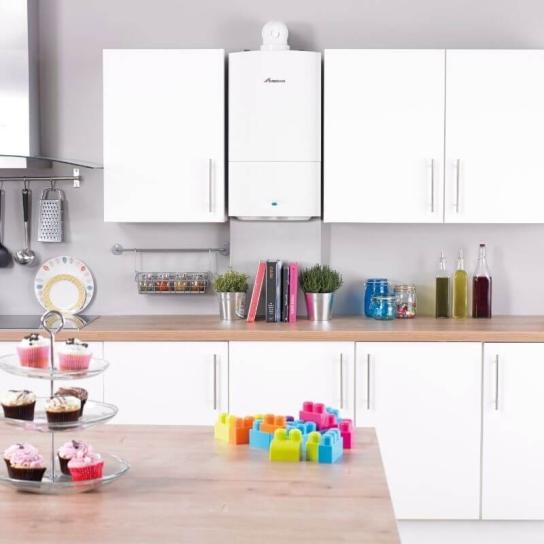
What will the domestic gas boiler ban in 2025 mean for me?
Under the government’s current plans, there's a gas and oil boiler ban in newbuild homes only from 2025.
Ministry of Housing, Communities & Local Government tells us there are about 25 million homes in the UK – and we build about 160,000 new ones each year according to the National House-Building Council. As such, it’s likely to be many years before a new build gas boiler ban alone has a big impact on greenhouse gases. And some environmental groups argue that the government needs to go further, much sooner.
Will the gas boiler ban apply to my home?
If you’re worried about having to ditch your existing oil or gas boiler – don’t be. The gas and oil banner ban in 2025 only applies to newbuild properties. There are no plans to phase out gas boilers in existing homes.
That said, the government may encourage more of us to ditch gas in favour of alternatives. Using grants or incentives for insulating our homes or installing low-carbon heating.
This is already happening with schemes like the Boiler Upgrade Scheme. A Government-funded initiative that provides an upfront cost towards a renewable heating system, like a ground source or air to water heat pump. It provides a financial incentive to switch to lower-carbon heating system.
In time, it’s possible there could be a complete gas boiler ban. And UK homeowners would have to replace their boiler with a low-carbon alternative. But it’s highly unlikely that this will happen before many of our draughty houses are better insulated first.
What are the alternatives to gas central heating?
There are already viable alternatives to using gas and oil to heat our homes. In some countries, natural resources have been providing ‘free’ heat for many years. Around nine out of ten homes are heated by Iceland’s hot water springs, for example.
District heating systems
Iceland is a pioneer of so-called ‘district heating’ systems. Through these heating systems, whole streets, developments and even communities are supplied with hot water from a central geothermal plant.
This concept is now being more widely applied across the world. For instance, using low-carbon energy sources – such as biomass, or heat-pumps – to recover the waste heat from factories and other industrial activities.
District heating is usually most suitable for campuses or densely populated areas. In short, where lots of people live! But electric heating can provide a more flexible solution for other types of homes…
Electric heating
Electric alternatives to gas boilers can be as basic as bar fires and other portable heaters. More sophisticated systems include modern-day storage heaters and heat-pump systems that provide hot water and underfloor heating.
It’s useful to view electric heating as two separate groups: heaters, and heat-pumps, since they work differently:
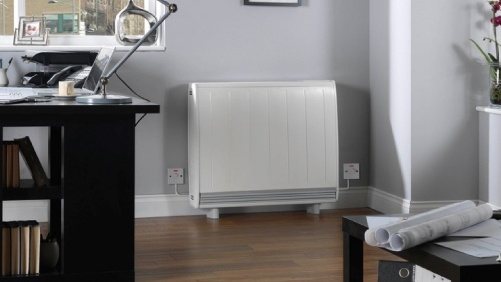
Heaters include the kind of electric fires and fan heaters we’re all familiar with – along with more sophisticated devices like storage heaters. This group also includes direct electric underfloor heating, and electric water heating via immersion heaters and electric boilers.
All of these work by using a heating element to heat something up – be it the air, floor, or the water in your tank. Electric heaters are 100% efficient. So they turn virtually all the electricity they use into heat. On the flip side, they use a lot of electricity. And they can be expensive to run if you don’t have Economy 7 or a time of use tariff.
Heat pumps work differently. Instead of generating heat, they simply move it! They work a lot like a fridge going backwards, pumping heat from outside your home into your hot water or heating system.
There are two main types of heat pump. Air source heat pumps (ASHP) – which extract heat from the outside air. And ground-source heat pumps – which (GSHP) take it from pipes laid in the ground. Both have the advantage that they use a lot less power. For a given amount of electricity, Daikin says heat pump systems can be three or four times more efficient heat than an electric heater.
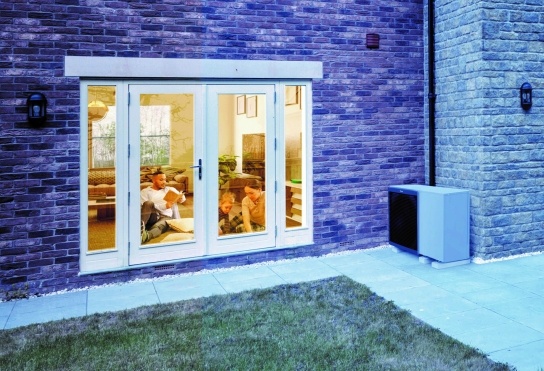
Cost of electric heating
The upfront cost of low-carbon heating systems can be high. But the good news is that they can be cheaper to run than fossil fuel-powered systems. Some renewable systems – such as solar hot water heating – can even run for free! (Although they can’t usually provide all of your hot water requirements[5].)
Apart from their high efficiency, all electric heaters have the advantage that they are as green as your electricity supply. So if you sign up to a renewable tariff, your electric heating system effectively generates zero-carbon emissions.
What about the future of home heating?
Low-carbon heating systems are important in helping the UK get heating from more ‘green’ sources.
But we also need to look at the flipside: how we can use less energy in the first place. And we’re not just talking about switching off lights in empty rooms. But what we can do to make our homes warmer – so we need less heat in the first place.
For several decades there’s been a slow improvement in the efficiency of houses. More homes now have energy-saving features – like double-glazing, thick insulation and smart heating.
But tomorrow’s homes will do more with less. And one growing area of innovation is ventilation.
Future ventilation systems
There’s no getting around the importance of ventilation in our homes. And not just to avoid that musty smell which lingers when you return to a locked-up house after holiday. The air needs to be refreshed continuously to bring in oxygen and clear out humidity, waste gases and smells.
Opening the windows, however, lets out the heat. Which is where approaches like HVAC (heating, ventilation and air conditioning) come in. HVAC systems typically use ducts to circulate heated or cooled air around the home. This replaces stale air and eliminates unwanted smells – without the need to open a window.
HVAC systems have been around for a while. But new techniques are helping to make them more efficient. Mechanical heat-recovery ventilation (MHRV) systems, for example, recover the heat from stale air and use it to warm the fresh air entering the house. An MHRV fan is a little more complicated than a standard extractor fan. But it can recover 84% of the heat from stale air according to Vent Axia.
Airtight buildings with extreme insulation and this kind of heat recovery system can reduce their heating use to a minimum… Sometimes the waste heat from occupants and appliances is all that’s needed! And while it sounds futuristic, a small number of homes are already being built to this kind of standard.
Passivhaus certified homes must use less than 15kWh of energy per square meter per year[6]. Energy Saving Trust says for the average-sized UK home, heated with electric radiators on Economy 7 electricity, this would be a total of less than 1,300kWh costing only £124 a year!
Other future heating technologies
New developments in heating technology promise other energy-saving options in the future too. For example, infrared panels can be fitted to walls or ceilings and provide invisible, near-instant heat to individual rooms.
Infrared panels are highly controllable. Since they heat in a similar way to the warm sun on a cold day; rather than relying on convection currents to carry warm air around the room. And, depending on the installation, they can use about four times less energy than a standard electric radiator.
So whether you’re in the market for a new gas boiler or a low-carbon alternative in readiness for the gas boiler ban, we can help. Take a look at our new boiler deals. Learn more about the pros and cons of electric vs. gas. And make sure you’re doing everything you can to make your home as energy-efficient as possible.
Sources:
[1] See Figure 2 here.
[2] The Guardian: Low-carbon heating to replace gas in new UK homes after 2025
[3] Express: Gas boilers face ban from next year - Boris Johnson issues new green initiative
[4] The Future Homes Standard, a 2019 consultation for the Ministry of Housing, Communities and Local Government
[5] The Renewable Energy Hub: How much does a solar thermal system cost?
